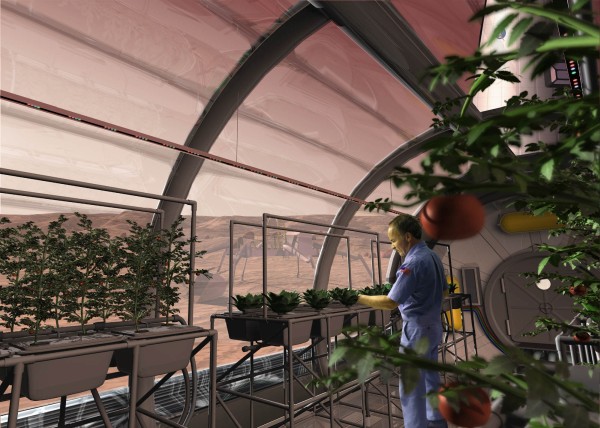
The Martian held a lot of interest of the audience when Matt Damon found a way to grow food on Mars. And that’s the beauty of science. Believe it or not, as the audience marvelled at the thought of growing food on Mars, scientists on Earth were making it happen!
Early successes
Early this year, China’s Chang’e 4 Moon lander announced that the experiment of sprouting cotton seeds on the moon was a success. After many successful attempts to grow food in the International Space Station, this milestone breakthrough came on April 2019.
But just like deep space exploration, the race to grow food in space also began decades ago.
The need for such experiments arose when ambitious projects of sending humans to space began. For long term missions, it is estimated that astronauts require 10,800 kgs of food, which is a huge cost in the space missions. Scientists then explored the idea of space farms where crops could grow to not only supply food, but also generate oxygen and recycle wastewater. With these experiments, science is pushing the boundaries of growing food in areas where it was deemed impossible. In this journey, seed innovation plays an important role as it determines the quality and nutrition of the plant which will sprout.
Potential outcomes
Once space farming is possible, growing food would help the astronauts address their vitamin gaps. Having access to fresh food on this journey, would itself be a more effective supply of nutrition.
Not an easy ride
Astronauts traveling to Mars in the future, would require food for the 2.5 years journey and then some more when they land. These experiments could be the answer to the challenges. Space farming is not an easy task. Challenges of reduced gravity, unavailability of natural resources such as water, air and soil; and reduced pressure and light. Experiments thus far show that as compared to plants on earth, the plants grown in a space flight environment have been significantly smaller and grew at a slower rate.
Giving back to Mother Earth
Having said that, scientists acknowledge the potential to grow crops including potatoes, tomatoes, cabbage, onions etc in space farms. Not only space, these experiments are helping to solve challenges back on Earth. A number of NASA spinoffs in agriculture is helping in understanding the current state of crop growth throughout the growing season and predicting final crop yields with that data. Based on a model by NASA, there are commercial software which predicts corn production for farmers, ethanol producers and grain traders. It provides daily updates on the state of corn vegetation, incorporating nearly 30 variables including NASA satellite data. The space experiments also helped train algorithms to classify land types using satellite imagery. The work spawned a commercial computer learning program, now used with drone images, to assess the types, stages of growth, and health of crops in fields. The program inventories farmers’ fields and can predict annual crop yields.
1.Cooper, Maya; Douglas, Grace; Perchonok, Michele (2011-03-01). “Developing the NASA Food System for Long-Duration Missions”.
2.
Paul, Anna-Lisa; Amalfitano, Claire E.; Ferl, Robert J. (2012-12-07). “Plant growth strategies are remodeled by spaceflight”
final crop yields with that data. Based on a model by NASA, there are commercial software which predicts corn production for farmers, ethanol producers and grain traders. It provides daily updates on the state of corn vegetation, incorporating nearly 30 variables including NASA satellite data. The space experiments also helped train algorithms to classify land types using satellite imagery. The work spawned a commercial computer learning program, now used with drone images, to assess the types, stages of growth, and health of crops in fields. The program inventories farmers’ fields and can predict annual crop yields.

